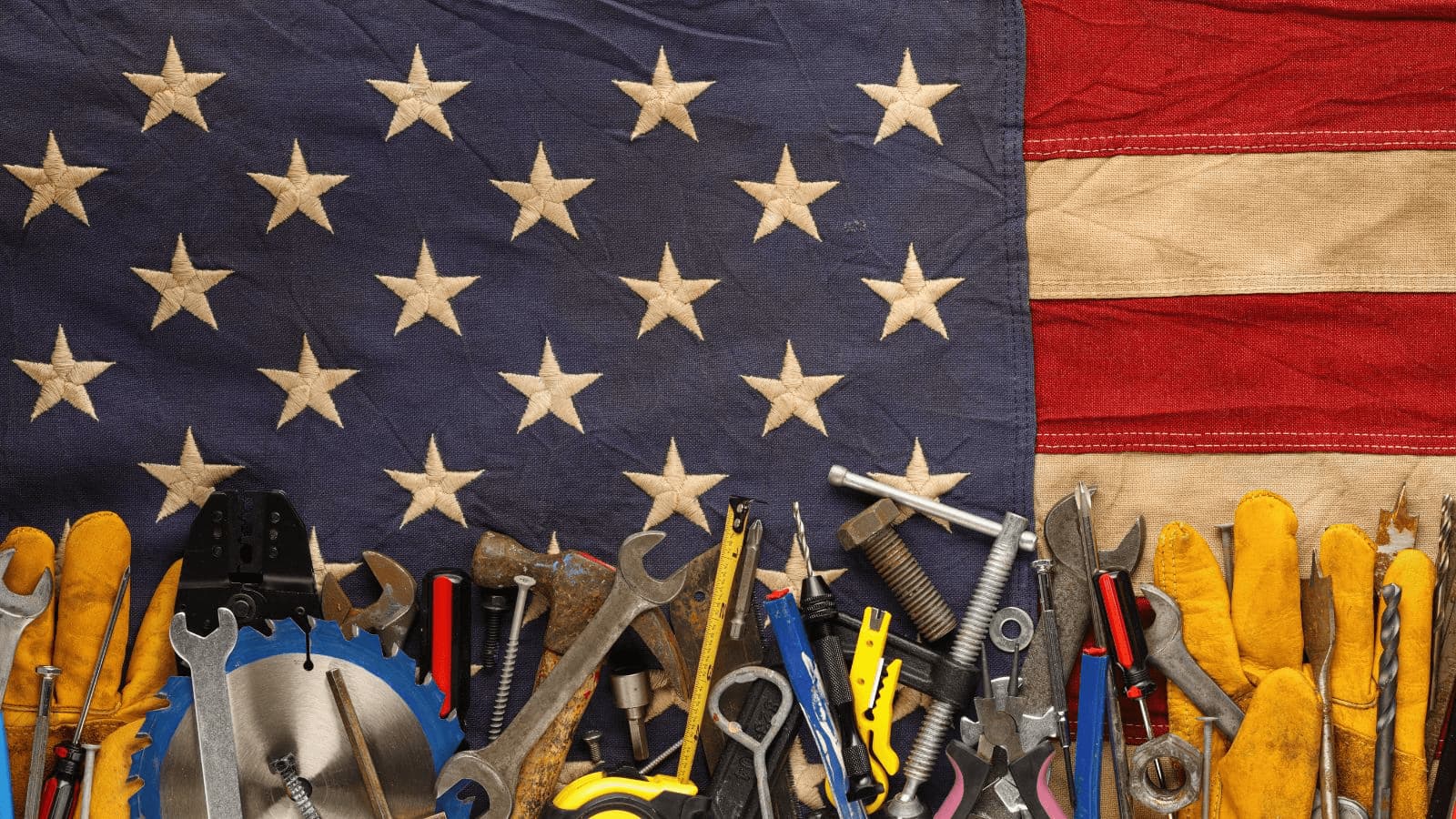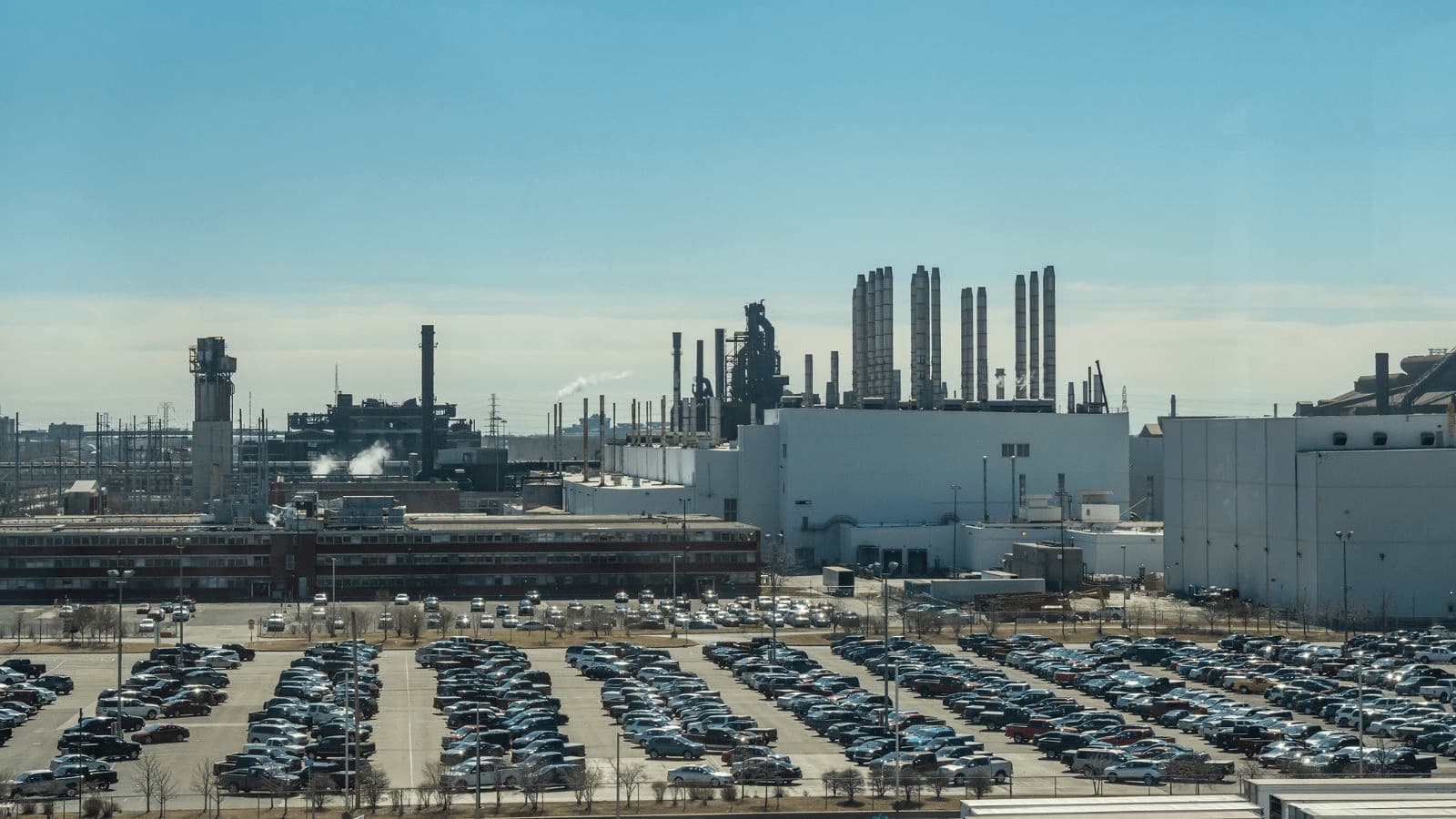The state of manufacturing in the US: top industries, employers, and cities
Here are the leading manufacturing industries in the US by state, including the largest employers and cities with the most employees.

James Humphreys

Quick facts about the manufacturing industry in the US
In this article, you’ll learn how:
- Salmon harvesters in Alaska caught so much fish in 2019 that the weight exceeded that of The Empire State Building
- In 2020, small businesses in California made up 96% of the state’s exports
- Printing and publishing industry growth shrunk by 10.9% from 2010 to 2020
- Over 16 years, the employment rate from lumber and wood products fell by 15%
- Wyoming has a third of the total uranium reserves in the US
- Wages for manufacturing workers in Mississippi are 45% lower than the national average
In 2020, the number of manufacturing employees in the US reached 12,182,000.
However, if you know anything about manufacturing, then you know that this industry is extremely diverse. That is why we have looked into all the different manufacturing industries in the US and uncovered which sector employs the most workers in which state. Below you can use the interactive map to see the most dominant industry in each state.
The largest industries in the US
By Katana
As you can see from the map above, food and kindred products make up the majority of manufacturing in the US. However, just because an industry is the most present in a certain state, doesn’t mean businesses from the industry employ the most workers. Below, you can find the biggest manufacturing employers in each state.
The biggest manufacturing employers in the US
By Katana
Food and kindred products are the most manufactured items in the US
As already mentioned, America’s manufacturing landscape is a diverse one. However, the most popular consumer goods produced in the manufacturing industry are food and kindred. But, take Delaware for example — yes, the biggest employers are chemical and allied product producers. But the award for the industry for the most employed once again goes to food processing, coming in at 29%.
So, by using the maps above, you can see which manufacturing industries are the largest and which businesses employ the most workers. But what about employment by cities? Below is a table detailing the number of employees in US cities working in the manufacturing field.
The cities with the most manufacturing employees
*Data is an estimate and subject to change
Source:MNI.net
Texans love to make things
In 2019, manufacturing industries employed around 900,000 Texans, generating $241 billion for Texas’ GDP. To put that GDP contribution into perspective, this economic output is larger than both Russia’s and Mexico’s manufacturing GDP.
In this article, we take an in-depth look at the top industries in 10 different states, exploring why these particular industries dominate the manufacturing landscape in these states or investigating their decline in some instances. So, without further ado, let’s dive in.
1. Food and kindred products — Alaska

Alaska’s food and kindred products industry accounts for a whopping 56% of employment for the entire state in the manufacturing field.
The food and kindred products industry in the US consists of establishments that process raw materials of animal, agricultural and marine origin into food products. And why is employment in this industry so large in Alaska? The answer is simple — it’s access to the sea.
According to a 2019 report for the Alaska Seafood Marketing Institute, led by McKinley Research Institute, salmon fishery’s ex-vessel value (the price per pound a fishery receives for selling fish) was $715 million.
Excluding other businesses in the food and kindred products industry, the seafood industry alone generated a total of 68,700 jobs in 2018. In terms of total annual economic activity in Alaska, this manufacturing sector created $5.6 billion between 2017 and 2018. And in 2018, over $172 million was collected from commercial fishing taxes, fees, and self-assessments, and was distributed between:
- The state — 43% ($73 million)
- Local governments — 30% ($51 million)
- Salmon hatchery management — 23% ($40 million)
- The federal government — 5% (8 million)
In terms of exports, it’s been argued that petroleum and coal were the top exports for Alaska. However, seafood exports have been omitted from federal trade data, meaning that the biggest export is likely to have been seafood for the past few decades. But, including all manufacturing businesses in Alaska, Made-in-America goods exported from Alaska totaled $4.8 billion in 2018.
Did you know?
When something smells fishy in Alaska, it’s not because something suspicious is afoot. Harvesters landed 865 million pounds of Salmon in 2019, which is heavier than The Empire State Building. Meanwhile, pollock harvesters landed 3.3 billion pounds of the fish, which weighs around ¼ of The Great Pyramid of Giza.
2. Industrial machinery and equipment — Oklahoma

Oklahoma’s industrial machinery and equipment manufacturing sector employs 22% of the state’s workforce.
In 2019, exports from Oklahoma to around the world totaled $6.1 billion (the most going to Mexico and Canada) in finished products — 84% of those exports coming from small and medium-sized companies. The top product exported was machinery for manufacturing, followed by:
- Transportation equipment
- Computer and electronic products
- Chemicals
- Fabricated metal products
The fabricated metal products industry actually came in second as the largest industry by employment in the state, at 15%.
Oklahoma has some lucrative tax breaks for budding entrepreneurs with manufacturing ideas to create the next best thing since sliced bread.
The New Products Development Income Tax Exception allows inventors who developed and manufactured patented products (or have a patent pending) in the state of Oklahoma to be exempt from state income tax for seven years on any royalties earned, provided that the manufacturer remains in the state.
3. Chemical and allied products — Delaware

The state of Delaware’s chemical and allied products industry employs 22% of the total workforce in manufacturing.
AstraZeneca Pharmaceuticals, a Pharmaceutical and biotechnology giant, has the most employees based in Wilmington, Delaware, accounting for 2,600. The manufacturing industry in general in 2020 employed 5.9% of the total workforce in Delaware, most of which were based in New Castle County. Here is a small list of other interesting facts about the state of manufacturing in Delaware:
- 25% of manufacturing businesses exported their items internationally
- 11% imported their raw materials
- 9% are publicly owned manufacturing companies
- 2% of businesses are owned by women
4. Transportation equipment — Michigan

Michigan’s transportation equipment industry accounts for 21% of the state’s manufacturing workforce.
Many industries featured in this article may have the highest percentage of employment, but that doesn’t mean a business from that industry employs the most people. However, the transportation equipment industry is an exception. The FCA US, LLC, based in Warren, at the Chrysler Truck Assembly plant, employs a whopping 4,267 workers.
And Michigan has a long history of being a hub for the automotive industry.
Before the 1900s, the automotive industry in Michigan dominated the national economy and survived (or in some cases benefited) from a century of turmoil, including:
- World War 1
- The Great Depression
- World War 2
During WW2, Detroit became the main hub for producing military vehicles under the guidance of Henry Ford — arguably one of the biggest contributors to lean manufacturing with the introduction of the moving assembly line.
5. Miscellaneous manufacturing industries — Nevada

Like many secrets, it seems like Las Vegas manufacturing also stays in Vegas.
Miscellaneous manufacturing industries account for 17% of employment in Nevada. But what is miscellaneous manufacturing? It’s the classification for manufacturing industries that are not elsewhere classified.
There are a ton of industries that fall under this category, including coin-operated machinery — probably explaining why this industry is so popular in Nevada.
For example, Scientific Games Corporation — a global supplier of technology and services for government-sponsored lotteries and sports betting programs — employs 1,500 people in Las Vegas (almost half of all their staff). In 2017, miscellaneous manufacturing in Nevada brought in just over $2 billion. However, this isn’t the only industry operating in Nevada. The state also has a diverse manufacturing landscape, including:
- 11% Fabricated metal products
- 9% Printing and publishing
- 9% Industrial machinery and equipment
6. Electronic and other electric equipment — California

Where else would you expect to see electronic and other electric equipment booming other than in Silicon Valley?
Employment in the electronics industry accounts for 17%, with most people being employed by Intel Corp in Santa Clara. In 2019, the computer and electronic products manufacturing sector brought in $1.1 billion for the state. And according to revenue forecasts, the electronics and electrics industry is expected to reach approximately $10,5 billion by 2024.
The California Department of Tax and Fee Administration also has a Sales and Use Tax Exemption for Manufacturing.
California provides a sales tax exemption of nearly 4% for businesses using basic manufacturing equipment. This includes equipment for:
- Food processing
- Research and development
- Biotechnology
However, it’s not all sunshine and rainbows for the foreseeable future in electronics. This industry, particularly Intel Corp, is bracing itself for a recession. Recently, Intel executives announced they plan to cut $3 billion in 2023 in spending, including layoffs.
Did you know?
In 2020, small businesses in California made up 96% of the state’s exports.
7. Printing and publishing — New York

New York is famous for yellow cabs, pizza slices, and newspaper stands. Newspapers are so popular that New York’s printing and publishing industry accounts for 15% of employment in the state’s manufacturing sector.
Though it isn’t just newspapers and magazines that are bringing in the big dollars. This industry is a vital component of the New York creative economy, generating:
- 95,000 jobs
- $11 billion in wages
- $34 billion in total economic output
Publishing study workers have an annual income of $122,000, which is $23,000 higher than the city’s average.
The print and publishing industry is actually split into four different sub-sectors:
- Publishers
- Talent
- Print production
- Distribution and consumption
Only 1% of the publishing industry is involved with the print production sector. The majority of paper manufacturing and printing has moved to the Midwest or has been outsourced overseas to reduce manufacturing costs. Most businesses involved in print production nowadays offer small-scale printing and bookbinding services.
An industry being left behind
Rising manufacturing costs, overseas competitors offering lower prices, and a world shifting toward green manufacturing means the printing aspect of the publishing industry was reduced by 10.9% between 2010 and 2020.
8. Lumber and wood products — Montana

Montana’s lumber and wood products industry accounts for 14% of employment for the entire state because, well, they’ve got a whole bunch of trees — 26 million acres, to be precise.
Forested land makes up about 28% of the state — more than enough to make a beaver or woodpecker go giddy with excitement.
This industry has experienced some major ups and downs in the past few decades. By 1995, lumber and wood production accounted for 15% of the industry labor income. In 2000, the state’s manufacturing employment rate for this industry rose to 28%.
However, by 2016, this employment rate dropped down to 13% and only accounted for 11% of the industry labor income.
This downward trend began as far back as the 1960s, and comes as a result of the same trends in the printing and publishing industry. Green movement campaigns and public perception led the U.S. Forest Service and the Bureau of Land Management to reduce timber harvests across the entire country from 1.3 billion board feet in the late 1980s to 300 million in 2016. But these good intentions to protect the forest quickly backfired.
With less management and treatment, officials witnessed a decline in forest health and an increase in deadly and devastating wildfires.
What does this mean for the lumber and wood products industry in Montana? A slow and controlled increase of manufacturing operations in this industry. The Forest Service’s renewable resources management in Montana recommends treating 40,000 acres of forest annually by 2022, an increase of 16,000 acres in 2017.
9. Stone, clay, and glass products — Wyoming

Wyoming’s stone, clay, and glass products industry accounts for 11% of manufacturing employment in the entire state.
Mining (and agricultural) activities heavily prop up Wyoming’s economy. While some manufacturing takes place in the state, most people are dependent on mineral extraction for their personal income. The biggest employers in the state, both located in Wright, include:
- Thunder Basin Coal Co., LLC, with 1,567 employees
- Peabody Powder River Operations, LLC, with 1,200 employees
In 2018, the total output from manufacturing was $1.94 billion.
Why exactly is mining so popular in Wyoming? It’s all to do with its large deposits of different raw materials, including uranium, which makes up a third of the total uranium reserves in the US. But, with all that being said, the manufacturing output has been in decline over the last decade, from $3.41 billion in 2008 to $1.94 billion in 2018.
10. Furniture and fixtures — Mississippi

Lastly, the state of Mississippi sees 10% of its manufacturing workers operating in the furniture and fixtures industry.
In 2017, 1,894 manufacturing firms supported the manufacturing industry. And by 2019, the total manufacturing output was $18.68 billion. This is an increase of $4.41 billion from 2010.
In Mississippi, manufacturing is its business, and business is good.
But, as for the furniture and fixtures industry, and perhaps for the workers in the manufacturing field, the picture is not so positive.
In 2022, one Mississippi-based furniture company fired 2,700 workers without any warning, and a 2014 study from the National Employment Law Product found workers aren’t enjoying the same growth as the manufacturing industry is experiencing as a whole. Wages for manufacturing workers in the state are 45% lower than the national average. According to Catherine Ruckelshaus, a co-author of the study:
“The problem is, the jobs that are coming back aren’t as good as what was lost. The pay is less, and they often are filled by workers from temporary-labor companies.”
And there you have it, an in-depth breakdown of the state of manufacturing in the US. We hope that you found this article interesting, and below, you can find links to the sources used in this article.
Methodology
The majority of data and statistics for the employment in manufacturing industries by state was sourced from the U.S. Manufacturing Industry Business Databases & Manufacturers Directories. Other sources include:
Fair use and redistribution
We encourage and freely grant you permission to reuse, host, or repost the information in this article. When doing so, we only ask that you kindly attribute the authors by linking to katanamrp.com or this page so that your readers can learn more about this project, its research, and its methodology.

James Humphreys
Table of contents
Get inventory trends, news, and tips every month
Get visibility over your sales and stock
Wave goodbye to uncertainty with Katana Cloud Inventory — AI-powered for total inventory control